Welcome back for the third part of my four-part series on the best and worst forward lines and defensive pairings of the 2021-22 season. To this point, I have highlighted the best forward lines and most dominant defensive pairs, leaving the worst for last.
Let me pre-empt any arguments by saying that putting a line on this list does not mean that I think that each individual player is bad. Most of the time, it’s a case of playing styles that do not mesh well together, leading to poor on-ice results in terms of driving shots and scoring chances. The only objective criteria lines must meet to qualify for this list is that they must have played in a minimum of 150 minutes at 5v5 so far this season. In instances where two lines have posted similar numbers, I’ve picked those either facing less difficult competition or with more minutes played, decreasing the likelihood that their results are the product of bad luck.
Some of these lines no longer exist in their listed form, as coaches have no incentive to keep trotting out forward combinations that don’t produce results. Still, they meet the time-on-ice threshold and remain under consideration for the purposes of this article. Now, let’s dig into the worst forward lines of the season.
Anaheim Ducks: Derek Grant, Isac Lundestrom, and Jakob Silfverberg
As a whole, the Anaheim Ducks have been one of the NHL’s bright spots this season, challenging for their first playoff spot since 2017-18 on the back of an invigorating youth movement. However, the line consisting of Derek Grant, Isac Lundestrom and Jakob Silfverberg is doing them no favours in their hunt for the postseason, sabotaging the admirable efforts of their other forwards.
Related: Ducks Should End Playoff Chase and Become Sellers
In over 205 minutes at 5-on-5, the line has claimed a 43.8% of expected goals (xGF%) — eighth-worst among qualified lines — and has been outscored in actual goals by an 8-4 margin, the second-worst mark. It’s easy to see why this trio hasn’t worked together. It’s one part career-bottom-six option (Grant), one-third young player still acclimating to the NHL (Lundestrom) and a four-time 20-goal scorer in decline (only 11 goals in his last 96 games).
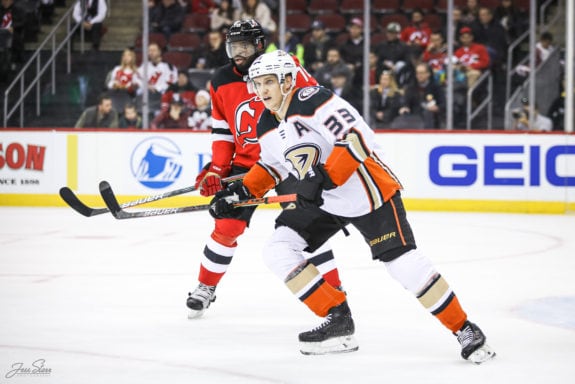
Grant and Lundestrom grade out as below league-average in terms of both shots and shot assists (the final pass before a shot) per-60 by Corey Sznajder’s tracking data, and Silfverberg hovers around the mean in both departments. Although Lundestrom is a strong transition player (fourth on the Ducks in zone entries with possession), Grant is one of the worst in the entire league. It’s difficult to manufacture any momentum when one-third of your line offers no punch going forward.
It’s possible that rejigging this combination or replacing Grant with another competent playmaker or puck transporter could reverse their fortunes. Adding someone like Sam Steel who immediately becomes the line’s best passer in terms of shot assists could make them more dangerous offensively. For now, this remains one of the most ineffective lines in the NHL this season.
Buffalo Sabres: Jeff Skinner, Tage Thompson, and Victor Olofsson
I feel bad picking on the Buffalo Sabres. The franchise looks competitive despite losing just as many games as usual, and Jeff Skinner has regained his scoring touch, ranking second on the team in both goals (20) and points (37) this season. The line’s struggles are understandable given the state of the NHL roster, but that won’t spare them from this list. Still, relying on players who are outside their depth in certain roles is almost always a recipe for disaster. In less demanding roles, each of these three players likely sees an uptick in their production and scoring chance numbers.
To this point, Buffalo’s most commonly used forward line this season (for now) combination has accrued a 41.1% xGF% (71st out of 72 qualified lines), but their scoring has spared them from a worse fate in actual goals. They still sit in the negative (10 for and 12 against), but their 28th-ranked rate of 3.37 goals per-60 (G/60) has kept them afloat. Given that this has been one of the team’s only steady sources of offence this season, their extreme surrendering of chance quality (third-last in expected goals against per-60 – xGA/60) is understandable to an extent. Still, it’s one of the worst defensive rates in the league, and the team’s goaltending (27th in team save percentage) has failed to mask their leaky play.
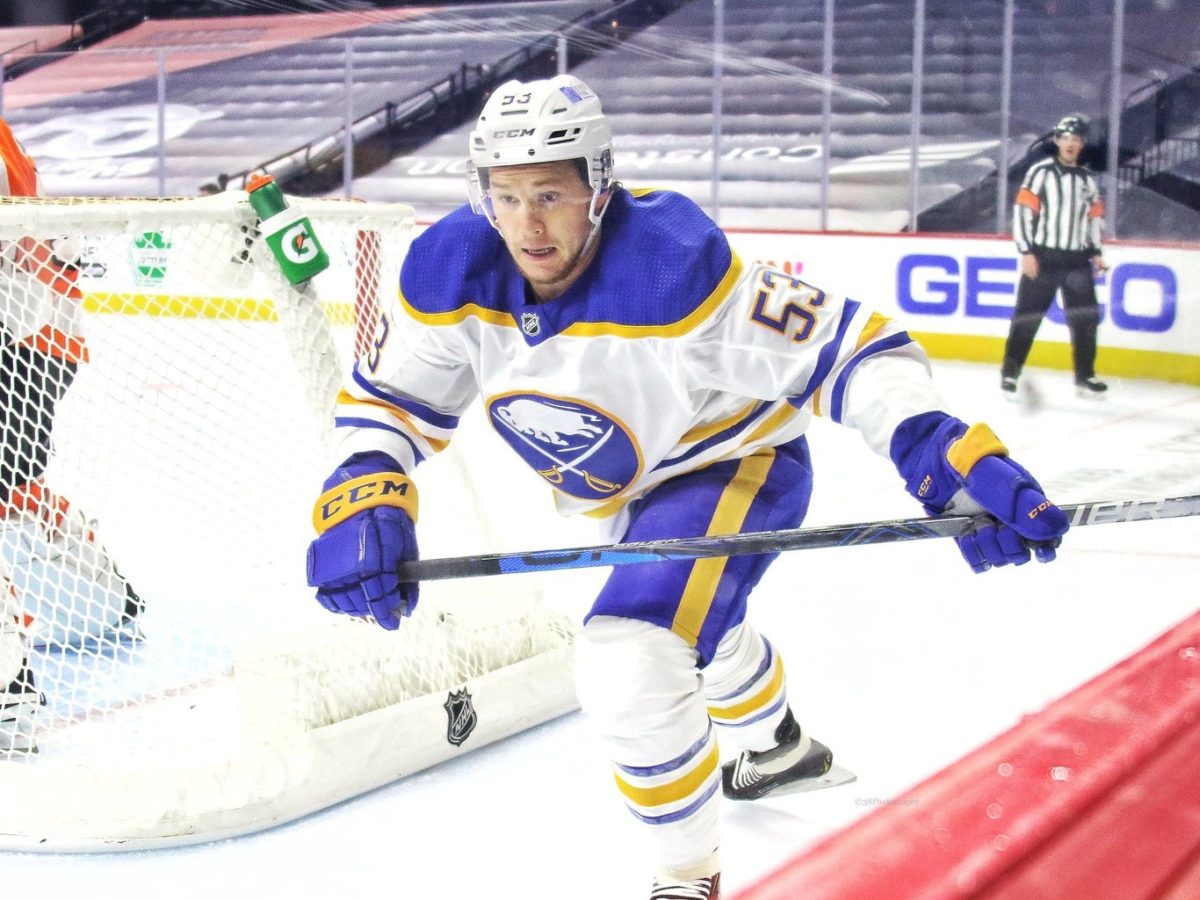
It’s not all doom and gloom in Buffalo, however, as replacing Victor Olofsson with Alex Tuch (from the Jack Eichel trade package) seems to have done wonders for Thompson and Skinner. Compared to Olofsson, Tuch is much better at carrying the puck through the neutral zone and creating good looks for his linemates. His strengths are accentuated when slotted next to a pair of shoot-first forwards, and it’s borne out in the numbers.
The newly minted trio has boosted both its expected (52.5%) and actual goals (56.5%) share into positive territory, an impressive feat when playing for a bottom-feeder. Though the Sabres don’t figure to be all that competitive in the near future, keep an eye on this line heading into the stretch drive of 2021-22 and ahead of the 2022-23 campaign.
Columbus Blue Jackets: Patrik Laine, Boone Jenner, Jakub Voracek
Don’t let the impressive scoring totals fool you, the Columbus Blue Jackets‘ top-line spearheaded by a rejuvenated marksman in Patrik Laine can put the puck in the net, but not much else. I could have just as easily put the Chicago Blackhawks’ line of Alex DeBrincat, Kirby Dach, and Patrick Kane in this spot for the same reason. Instead, I settled on the Blue Jackets’ trio, given that they’ve had 43 additional minutes at 5-on-5 to sort out their scoring chance issues.
Their 41.3% share of xGF is worse than all but two other forward lines this season (both of which feature on this list), and is drawn from the porous 3.3 xGA/60 they concede at 5v5, the fourth-worst rate in the NHL.
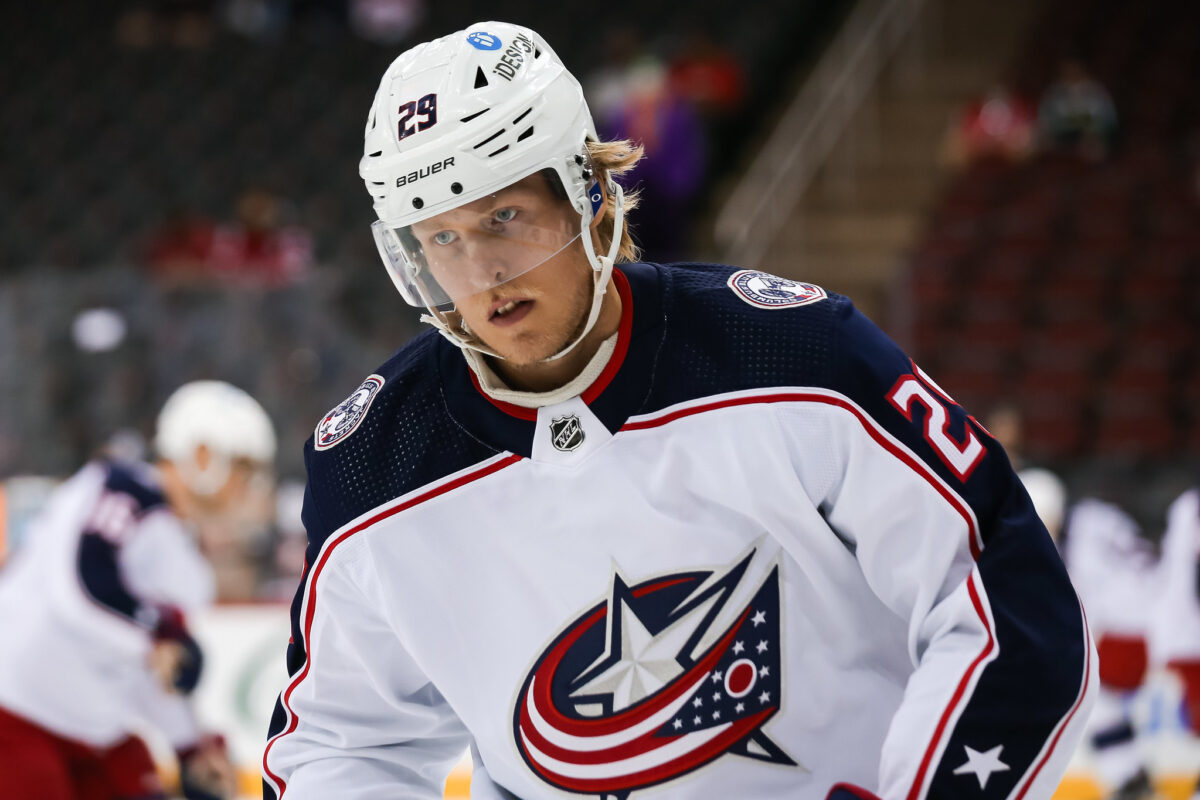
If not for the excellent goaltending the high-octane trio receives behind them (a .952 save percentage – SV%), their goal differential would better reflect how much they’re getting battered in the scoring chance department. When all three forwards are off the ice, Columbus’ goalies have only posted a .901 SV%, a remarkable difference in results that is too drastic to simply chalk up to the line’s supposed defensive prowess. Still, Laine’s remarkably hot finishing and an unsustainable run of goaltending put this line at a 10-6 advantage in goals at 5-on-5 (62.5% GF%), a discrepancy of over 20% between their actual and expected totals.
Related: Blue Jackets Missed Their Chance To Maximize Return for Korpisalo
Given that the Blue Jackets’ goaltenders collectively rank 24th in SV% in all situations this season, I’d keep an eye on how public perception shifts once the scoring dries up and the netminding woes hit this line as well. Even the best goalscorers slump every now and again, and Laine and company are no exception.
Dallas Stars: Michael Raffl, Luke Glendening, and Radek Faksa
Although this line from the Dallas Stars sits 63rd out of 72 qualified groups in terms of xGF% (45.5%), they’ve somehow underperformed even their own awful chance quality metrics. In some cases, teams throw on lines that can grind everything to a halt, hoping to escape their shift unscathed without trying to generate anything of their own. Both Luke Glendening and Radek Faksa rank among the lowest forwards in completing controlled zone entries, preferring to dump and chase to create what little offence comes off of their sticks.
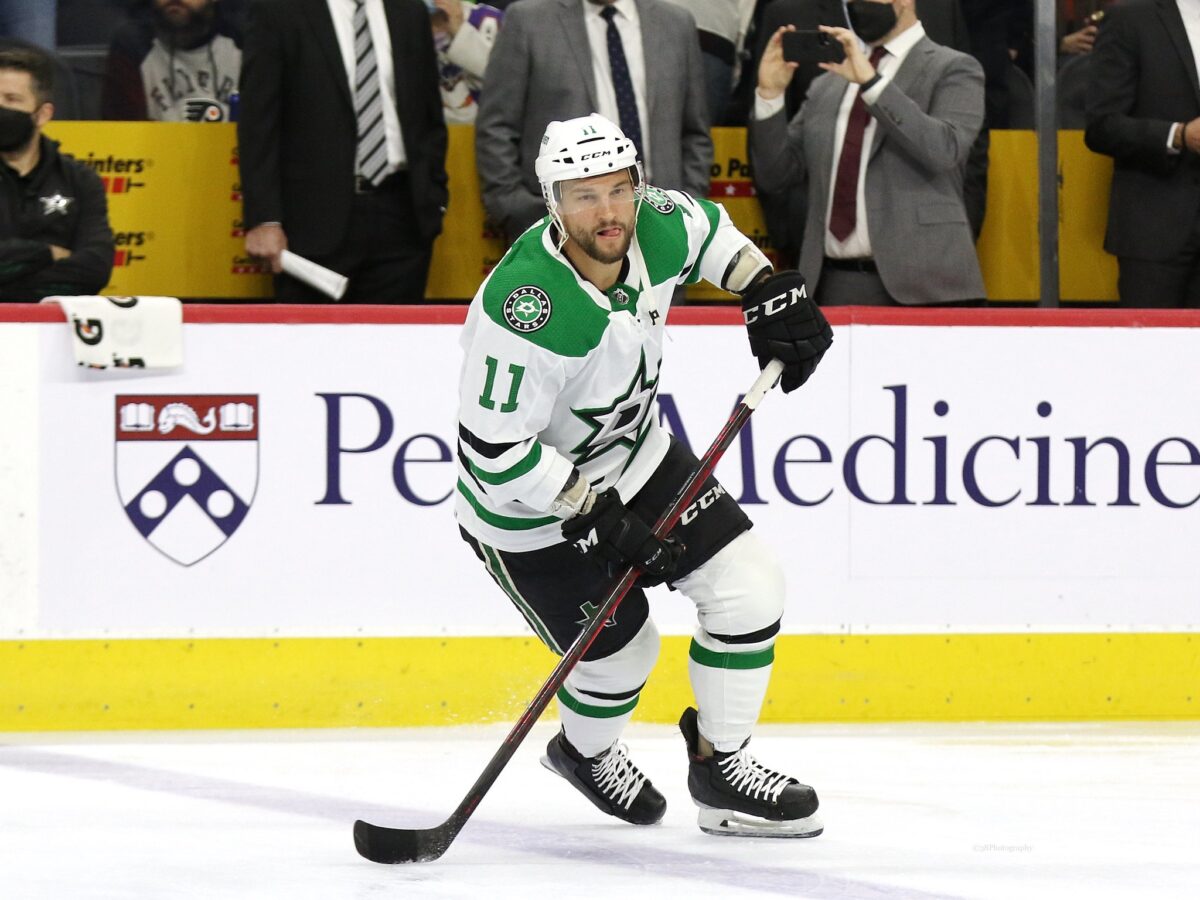
They manufacture the third-lowest rate of xGF/60 (1.83) and the fourth-lowest of GF/60 (1.79) and aren’t spectacular at keeping the puck out of their own end either. They’re 61st in goals-against per-60, although that mark suggests that they’ve been hung out to dry by poor goaltending given that they rank a respectable 26th by their xGA/60 rate.
Much of Dallas’ struggles this season can be traced back to their underperforming depth pieces behind their spectacular first line of Jason Robertson, Joe Pavelski and Roope Hintz. Jamie Benn and Tyler Seguin have disappointed relative to expectations, and their bottom-six contingent isn’t faring much better. The Stars are hovering on the periphery of the Western Conference playoff picture, but their immediate (and long-term) future doesn’t look too rosy if they remain a one-line team. Many consequential decisions will be made in Dallas in the coming weeks, ones that dictate the competitive direction of the franchise.
San Jose Sharks: Matt Nieto, Nick Bonino, and Andrew Cogliano
Like their Californian counterparts, the San Jose Sharks have found ways to stave off the misery typically associated with clubs in the midst of a rebuild (retool?). The organization has passed its point total (49) from last season with 54 points in three fewer games, and some of their young players have taken notable steps forward in their development.
Related: Sharks Should Trade Brent Burns this Offseason
Yet, their bottom-six line composed of Matt Nieto, Nick Bonino, and Andrew Cogliano is the NHL’s worst by every conceivable metric. According to MoneyPuck, the trio ranks dead last in xGF% (39%), GF% (29.6%), and shot-attempt share (39% CF%). They do not generate any quality scoring chances (last in xGF/60) and bleed chances at a higher rate than the average group (57th out of 72 lines in xGA/60).
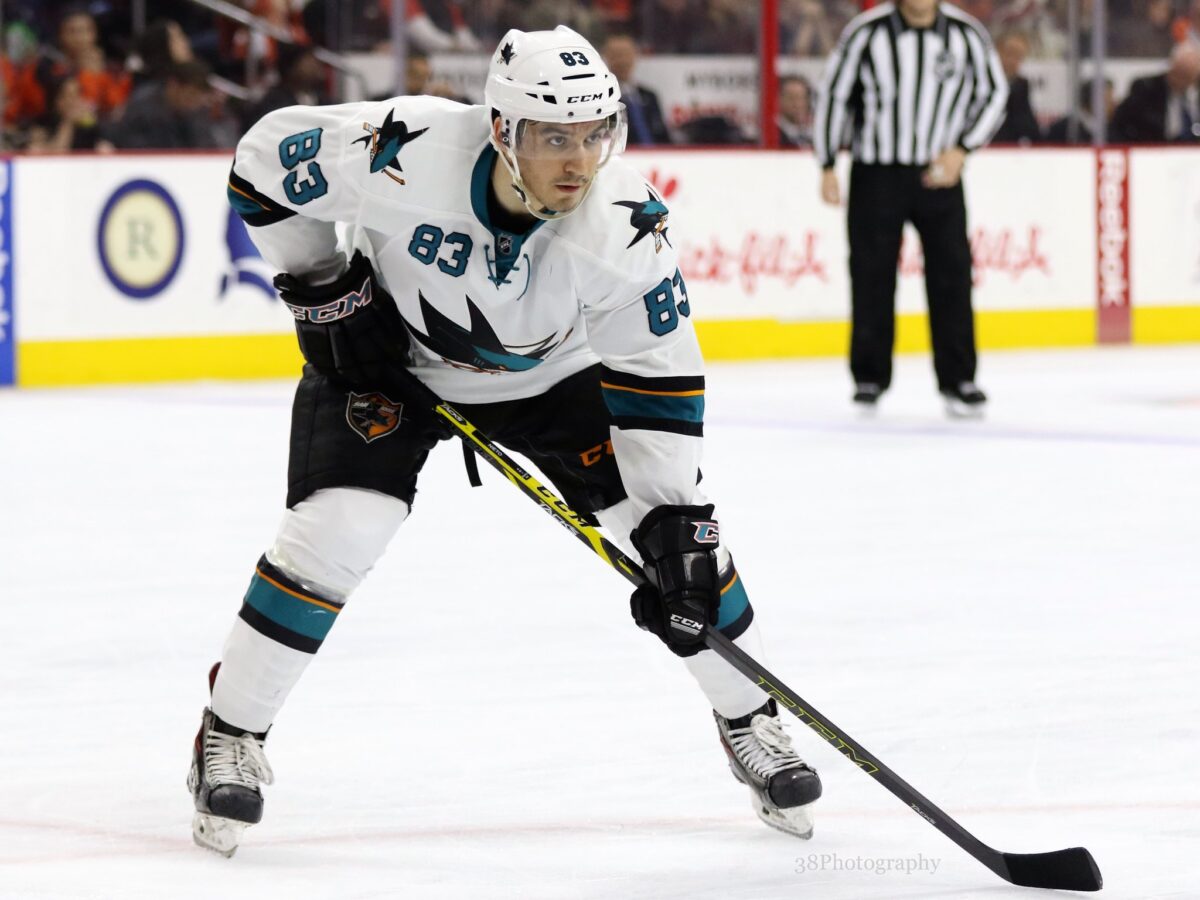
What’s astonishing is that despite James Reimer’s commendable play in the Sharks’ net in saving 3.9 goals above expected (GSAx), the line allows 5.39 GA/60. It’s only 0.27 GA/60 higher than the second-most porous line, but a whopping 1.2 GA/60 more than the trio just above them on the ladder.
If the Sharks weren’t set on trading Tomas Hertl at the deadline, I’d think that the team could improve tremendously next season just by replacing this line with competent NHLers. Yet, with Conor Bedard and Matvei Michkov the prizes for incompetence in the 2023 NHL Entry Draft, the Sharks shouldn’t mind keeping this combination intact for another year.
Whether a Forward Line Is Good or Bad Can Be Subjective
Harkening back to my opening paragraphs, fans and analysts alike could have different opinions on what makes a given line good or bad in their eyes. For some, creating a steady flow of scoring chances without conceding much in return is a significant factor. For others, being able to put the puck in the net or keep it out takes precedence in their rankings. I’ve attempted to comb through the numbers with a lens that combines the two, although it’s possible I’m entirely off base in my analysis. Below are several (dis)honourable mentions; let me know if I’ve missed any in the comments!
Dishonourable Mentions: Nick Schmaltz, Travis Boyd, and Clayton Keller (Arizona Coyotes); Eric Robinson, Sean Kuraly, and Alexandre Texier (Columbus Blue Jackets); Adrian Kempe, Anze Kopitar, Dustin Brown (Los Angeles Kings); Jonathan Drouin, Christian Dvorak, and Josh Anderson (Montreal Canadiens); Dryden Hunt, Ryan Strome, and Artemi Panarin (New York Rangers)
Data courtesy of All Three Zones, Hockey Reference, MoneyPuck, and Natural Stat Trick. Statistics are accurate as of March 1st.